
Chennai, formerly known as Madras, is the capital city of Tamil Nadu, the southernmost Indian state. It is the state's primate city both in area and population and is located on the Coromandel Coast of the Bay of Bengal. According to the 2011 Indian census, Chennai is the sixth-most populous city in India and forms the fourth-most populous urban agglomeration. The Greater Chennai Corporation is the civic body responsible for the city; it is the oldest city corporation of India, established in 1688—the second oldest in the world after London.
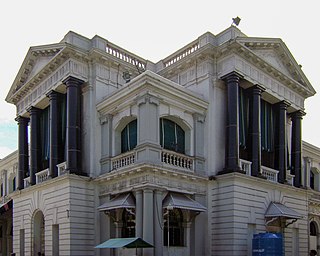
Fort St. George is a fortress in the coastal city of Chennai, India. Founded in 1639, it was the first English fortress in India. The construction of the fort provided the impetus for further settlements and trading activity, in what was originally an uninhabited land. Thus, it is a feasible contention to say that the city evolved around the fortress. The fort currently houses the Tamil Nadu legislative assembly and other official buildings.
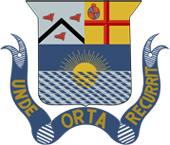
Presidency College is an art, commerce, and science college in the city of Chennai in Tamil Nadu, India. On 16 October 1840, this school was established as the Madras Preparatory School before being repurposed as a high school, and then a graduate college. The Presidency College is one of the oldest government arts colleges in India. It is one of two Presidency Colleges established by the British in India, the other being the Presidency College, Kolkata.

The Connemara Public Library at Egmore in Chennai, Tamil Nadu, India, is one of the four National Depository Libraries which receive a copy of all books, newspapers and periodicals published in India. Established in 1896, the library is a repository of century-old publications, wherein lie some of the most respected works and collections in the history of the country. It also serves as a depository library for the United Nations. It is located in the Government Museum Complex on Pantheon Road, Egmore, which also houses the Government Museum and the National Art Gallery.

Madras Christian College (MCC) is a liberal arts and sciences college in Chennai, India. Founded in 1837, MCC is one of Asia's oldest extant colleges. The college is affiliated to the University of Madras but functions as an autonomous institution from its main campus in Tambaram, Chennai.
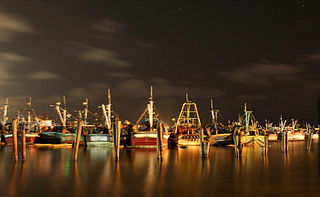
Royapuram is a locality in the northern part of the city of Chennai, Tamil Nadu, India. It is best known for its beach, and for Royapuram Railway Station. The station is the first railway station of south India, opening in 1856, and is today the oldest surviving railway station of the Indian subcontinent
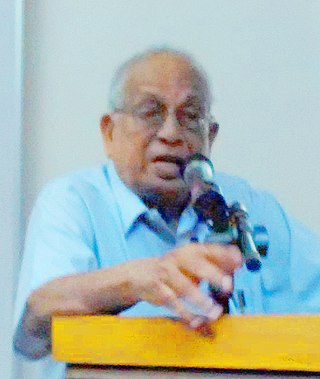
Subbiah Muthiah,, was an Indian writer, journalist, cartographer, amateur historian and heritage activist known for his writings on the political and cultural history of Chennai city. He was the founder of the fortnightly newspaper Madras Musings and the principal organizer of the annual Madras Day celebrations. Muthiah was also the founder-President of the Madras Book Club.

Chennai Book Fair is an annual book fair organized in Chennai by the Booksellers and Publishers Association of South India (BAPASI). The fair typically lasts for about two weeks during the New Year-Pongal season, that is between the last week of December and the third week of January. It is the second largest book fair in the country after the Kolkata Book Fair. All major Tamil and English publishing houses participate in this fair. It is considered as an important event in the Chennai cultural calendar along with the Chennai music season.

Iravatham Mahadevan was an Indian epigraphist and civil servant, known for his decipherment of Tamil-Brahmi inscriptions and for his expertise on the epigraphy of the Indus Valley civilisation.

The Tamil Nadu Legislative Assembly is the unicameral legislature of the Indian state of Tamil Nadu. It has a strength of 234 members of whom are democratically elected using the First-past-the-post system. The presiding officer of the Assembly is the Speaker. The term of the Assembly is five years unless dissolved earlier.

M. Muhammad Ismail was an Indian politician and social worker from Tirunelveli, southern Tamil Nadu. He served as the first President of Indian Union Muslim League after the partition of British India. He was popularly known in Tamil Nadu and Kerala as the "Quaid-e-Millat".

Raja Sir Muttaiya Annamalai Muthiah Chettiar was an Indian banker, politician, philanthropist, socialite and cultural activist who served as Mayor of Madras city (1933) and Minister of Excise and Education (1936–37) in the provincial government of Madras Presidency. He was holder of the hereditary title Kumar-rajah (1929–48) and later, Raja of Chettinad (1948–84).

Cinema of South India, refers to the cinema of the four major film industries in South India; primarily engaged in making feature films in the four major languages of the region, namely — Telugu, Tamil, Kannada, and Malayalam. Based out of the cities of Hyderabad, Chennai, Bengaluru, and Kochi, they are often colloquially referred to as Tollywood, Kollywood, Sandalwood, and Mollywood.

Chennai General Post Office (GPO) is located on Rajaji Salai at Parry's Corner, Chennai. It functions in a building built in 1884. It is located opposite to the Chennai Beach suburban railway station. Chennai GPO covers an area of about 23.33 km2 (9.01 sq mi) and serves a population of around 220,000. It has no sub- or branch offices.
Chennai, with historically rich records dating at least from the time of the Pallavas, houses 2,467 heritage buildings within its metropolitan area (CMA), the highest within any metropolitan area limit in India. Most of these buildings are around 200 years old and older. Chennai is home to the second largest collection of heritage buildings in the country, after Kolkata. The official list of heritage buildings was compiled by the Justice E. Padmanabhan committee. The Tamil Nadu Assembly passed the Heritage Commission Act in 2012 to preserve old heritage structures.
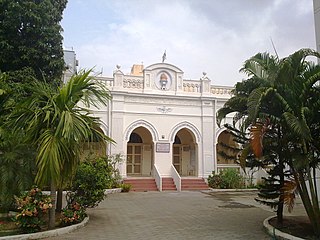
Jal Phiroj Clubwala Dar E Meher, popularly known as the Royapuram fire temple, is a Zoroastrian fire temple at Royapuram, Chennai, India. It was built in 1910 and donated to the Madras Parsi Zarthosti Anjuman by philanthropist Phiroj M. Clubwala. The temple is one of the 177 odd fire temples in the world, of which some 150 are in India. It is the only Parsi fire temple in Tamil Nadu and surrounding region, including Puducherry and Kerala. The flame in the temple is burning continuously ever since the temple was built and is stoked five times a day by the priest.

Tambaram City Municipal Corporation is the civic body administering the southern suburbs of Chennai in the Chengalpattu district of Tamil Nadu, India. It covers an area of 87.64 sq. km in the Pallavaram and Tambaram taluks adjacent to the limits of Greater Chennai Corporation, and has an estimated 2021 population of 960,887.

Royapettah is a neighbourhood of Chennai, India.

The Madras High Court is a High Court in India. It has appellate jurisdiction over the state of Tamil Nadu and the union territory of Puducherry. It is located in Chennai, and is the third oldest high court of India after the Calcutta High Court in Kolkata and Bombay High Court in Mumbai. The Madras High Court is one of four charter high courts of colonial India established in the four Presidency Towns of Madras, Bombay, Allahabad and Calcutta by letters patent granted by Queen Victoria, dated 26 June 1862. It exercises original jurisdiction over the city of Chennai, as well as extraordinary original jurisdiction, civil and criminal, under the letters patent and special original jurisdiction for the issue of writs under the Constitution of India. Covering 107 acres, the court complex is one of the largest in the world, second only to the Supreme Court of the United Kingdom.


















